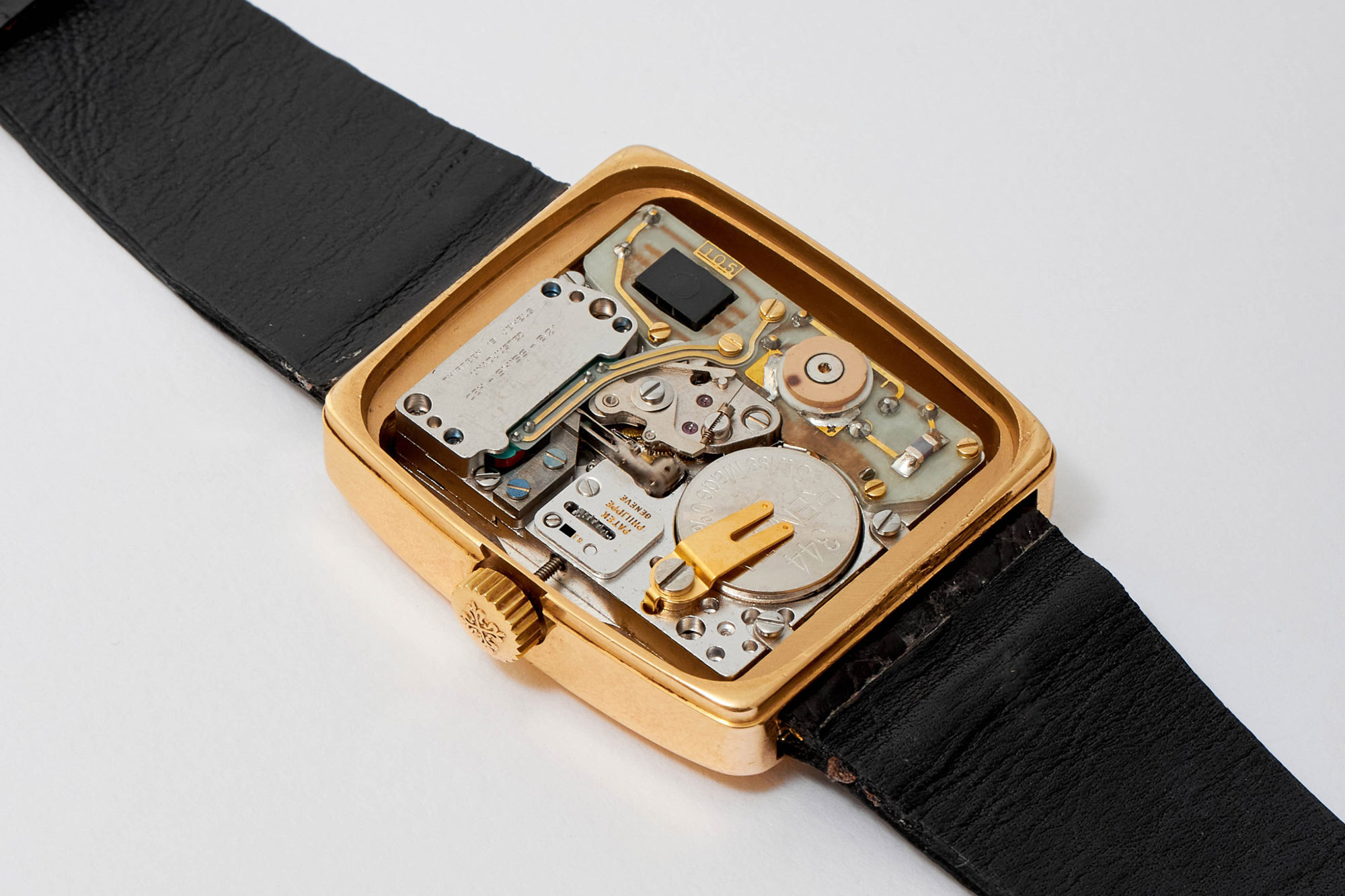


You may assume that technology has long been the enemy of the mechanical watch. For centuries, watchmaking has hyper focused on the refinement and progress of small elements to improve accuracy and tolerance. Innovation within tight barriers formed by Côtes de Genève finished bridges with beautiful anglage is the currency of watchmaking.
Technology strips away human ingenuity in favour of consistency, speed, and efficiency, just like the camera did for the meticulous manipulation of a paintbrush guided by an artist’s expression. But in reality, does it? In the same way that the arrival of the camera evolved the visual expression of art, once technology in watchmaking was embraced, its threatening persona eased. In one camp, it has driven evolution; in another, such as the Beta 21, it united a country.

The IWC calibre 2001 “Beta 21”
If you’ve read past issues of Oracle Time and stumbled upon my previous stories, you’ll be well aware of the impact battery-powered watches had on the traditional mechanical industry. This new technology saw a small battery and quartz tuning fork replace the role of the mainspring and gearing to deliver accuracy far greater than mechanical watches could achieve at the time.
This technology rapidly became more accessible, and as such, seemingly overnight, the mechanical wristwatch had lost its purpose. It is believed that during the arrival of quartz watches from 1970 to 1988, Swiss watch employment dropped from 90,000 people to just 28,000 – for the Swiss, it very much was a quartz crisis.

The Centre Electronique Horloger (CEH)
The story of Beta 21 truly begins with the invention of quartz in 1928 by Bell Labs. The first quartz clock used a quartz-crystal oscillator to generate a stable timing signal. This was extremely useful in labs due to their highly accurate timekeeping, but the technology was still decades away from any form of cuff-friendly proportions.
Eventually, during the 1960s, quartz movements evolved to the degree where they could fit inside marine chronometers. However, with the majority of these advancements happening overseas in the US and Japan, the ancestral home of watchmaking feared their country’s USP would eventually slip away behind their backs. As such, a research organisation known as The Centre Electronique Horloger (CEH) was formed in 1962. Interestingly, some of the people behind the institute included those from Ebauches SA (later ETA) and the Swiss Federation de l’Industrie Horlogère (FH), as well as approximately 20 houses.

Bell Labs Synthetic Quartz
Three years after its founding, the CEH landed on a quartz crystal as being the best option for creating their own electric watch after attempting a tuning fork approach previously – think Bulova Accutron. By 1967, their quartz attempt was a success, and the Beta 1 prototype was born. This piece was, in fact, technically the first quartz-powered wristwatch, five years before the Seiko Astron – albeit at a prototype level versus Seiko’s completed watch. Upon completion of the prototype, full production of the quartz movement began, and in 1970, the Beta 21 was conceived.

Patek Philippe ‘Beta 21’ ref. 3587
At the 1970 Basel Fair, many of the couple of dozen brands involved in the project released watches using these movements, including Rolex, Patek, Omega, IWC, Longines, Piaget, and Jaeger-LeCoultre. The Swiss had proven they could be competitive within the realm of quartz watches, but there was a catch: the movements were a commercial flop. Despite the movements being very large, they ran out of power quickly and not long after they were introduced, manufacturers released their own take on quartz movements, such as the Piaget 7P, the world’s flattest quartz movement at the time at just 3.1mm.
The Beta 21 movement was only in production from 1969 to 1972 officially (OMEGA took over production and made iterations well into the 1980s), with a staggering 6,000 movements being made in that short period of time.

The IWC Da Vinci ref. 3501 was the first watch equipped with the “Beta 21” quartz movement.
Beta 21-powered watches, while all uniquely designed by each maison, all carry a distinctive appearance. The combination of being born in the very bohemian design style of the 1970s and the thickness of the movement resulted in very chunky, quite quirky watches. The most well-known Beta 21 powered pieces come from the likes of Piaget with their 14101, Rolex with the 5100, Patek with the 3587, as well as their Da Vinci Beta 21. Within niche collecting circles, these command premium prices, but pieces like the Omega Electroquartz and Longines Quartz Chron can be purchased for a few thousand pounds.


Omega ref. 196.005
Sadly, the Beta 21 doesn’t have a happy ending, but what it does represent is how horizontal the watch industry has always been, especially when it’s facing a challenge. Every brand talks today about vertical integration within their manufacturer, with custom rotors being enough for some to claim the calibre is ‘in-house’, but the industry is built upon a horizontal operation. There are specialists for every component for cases, buckles, movements, dials, and watch straps. The Beta 21 project represents a rare public moment where all brands recognised the importance of strengthening together.
Oracle Time